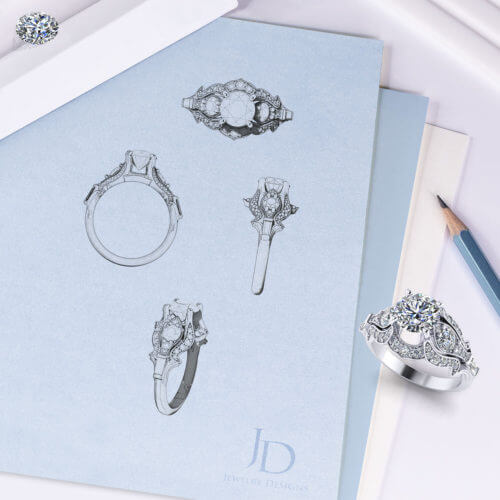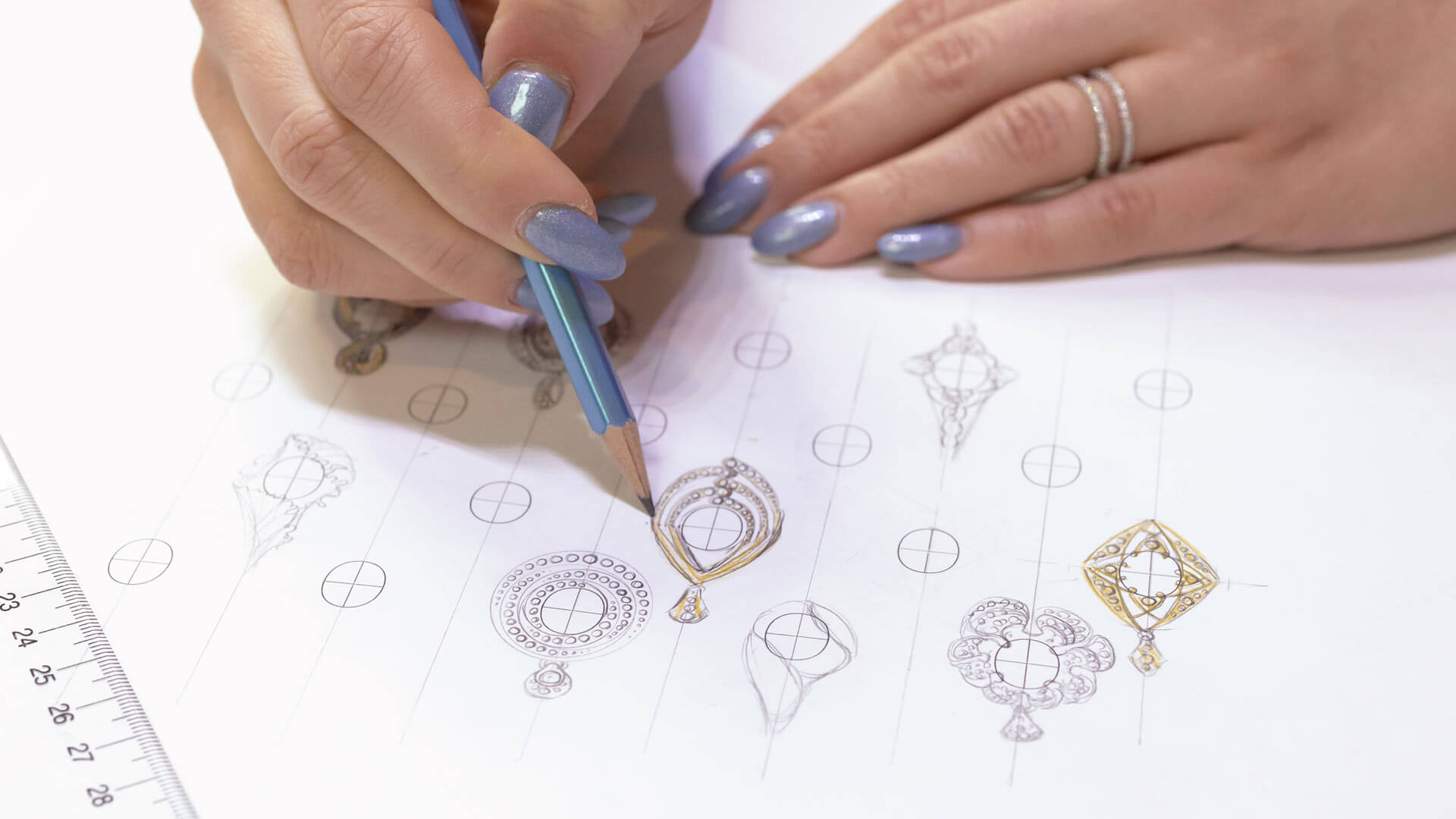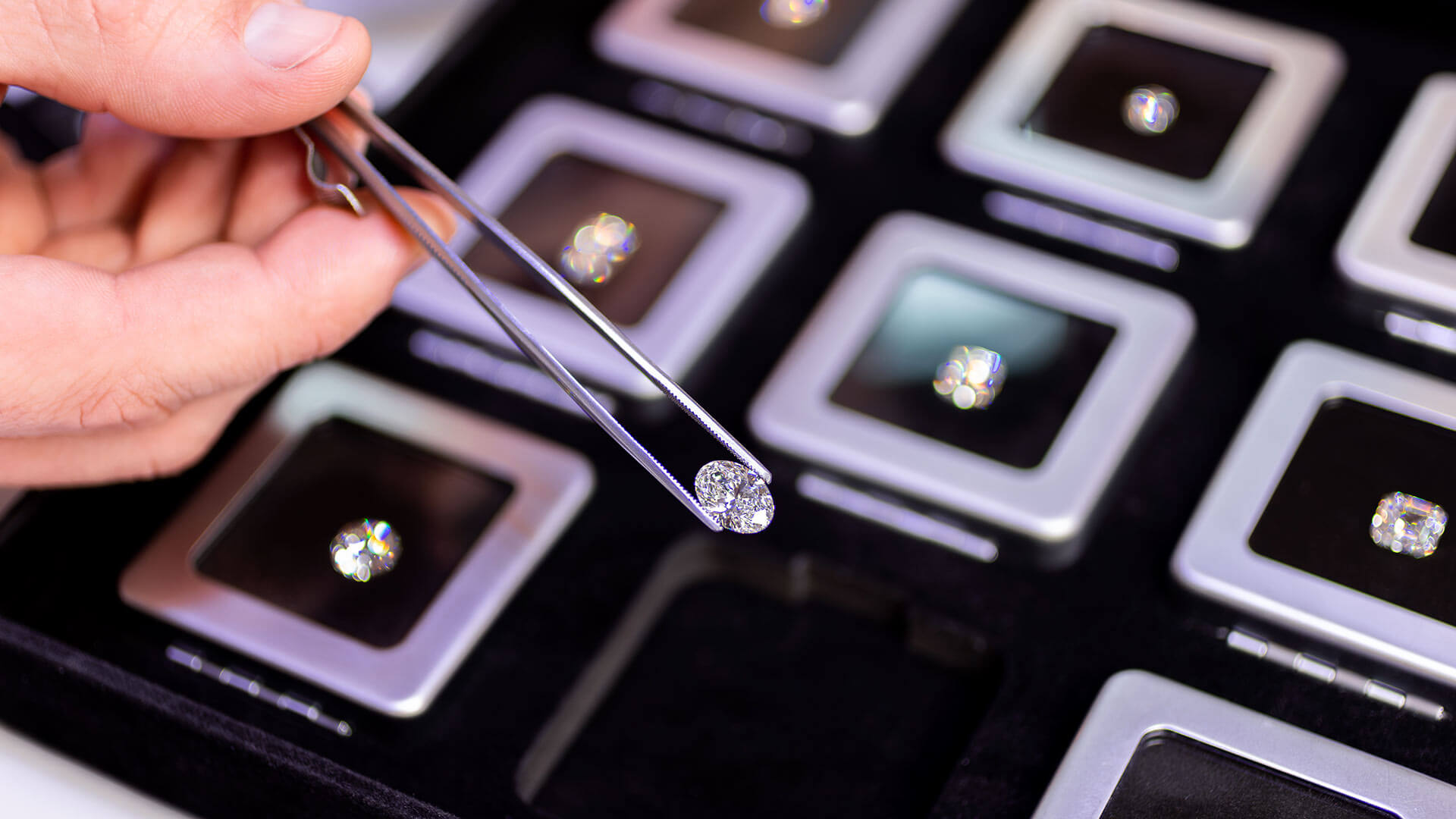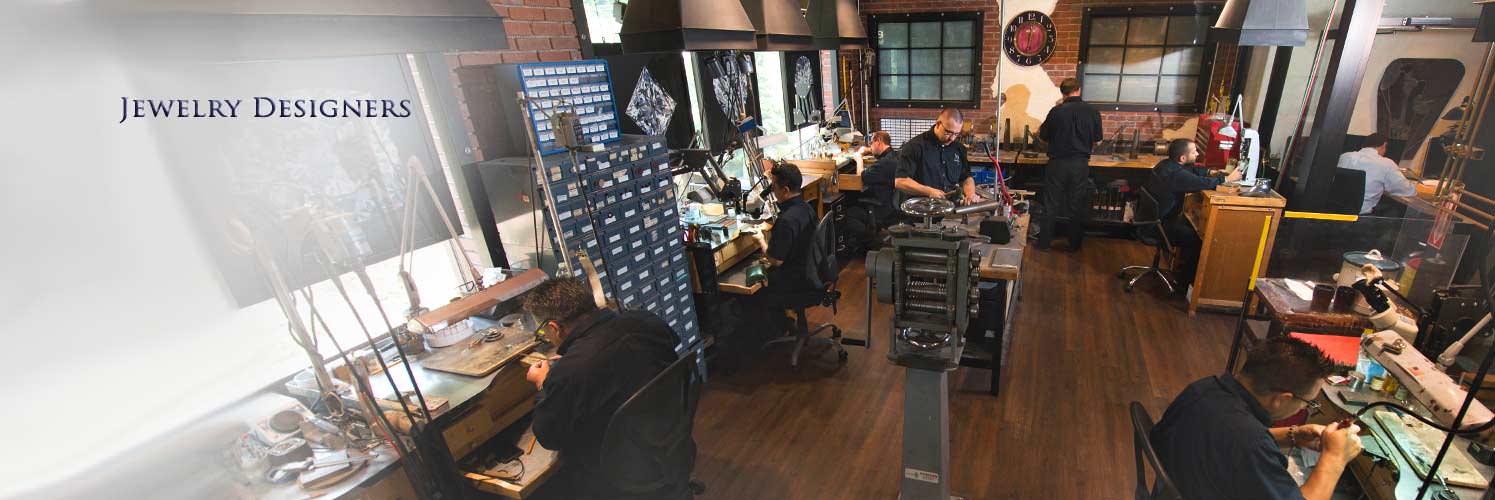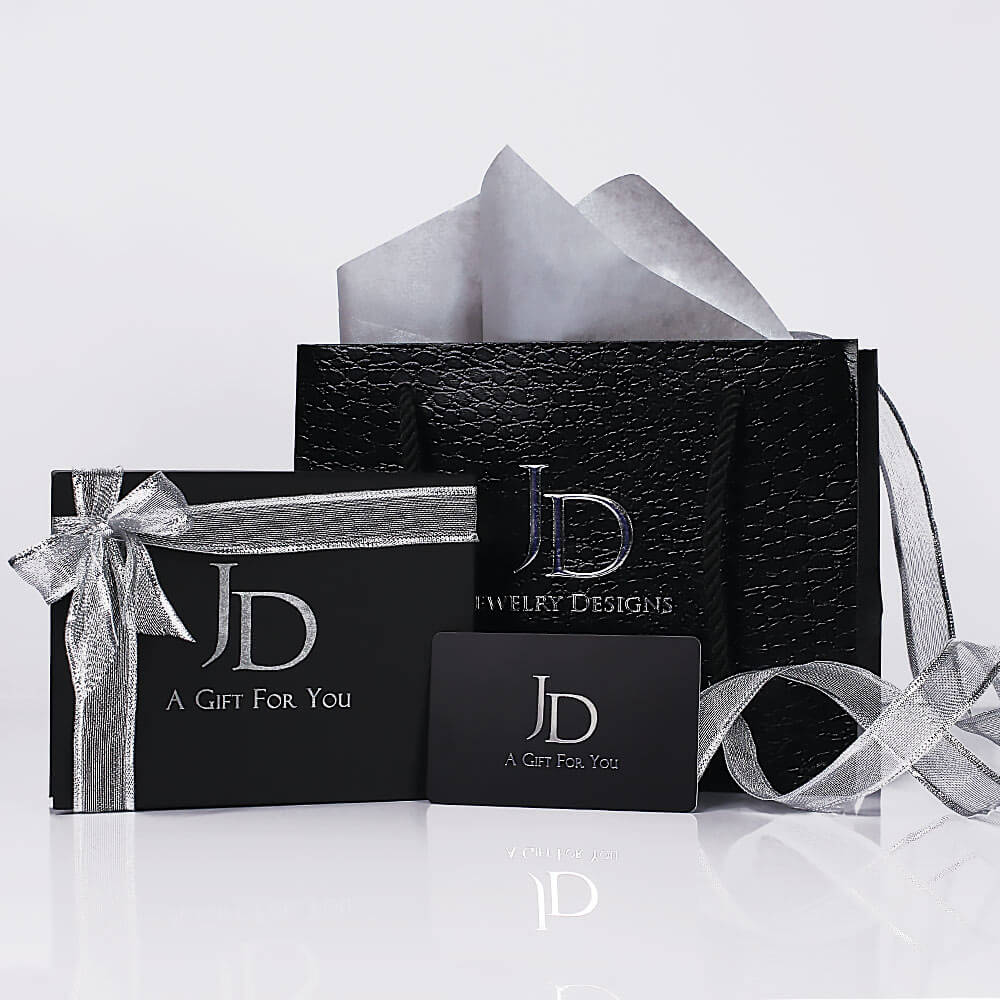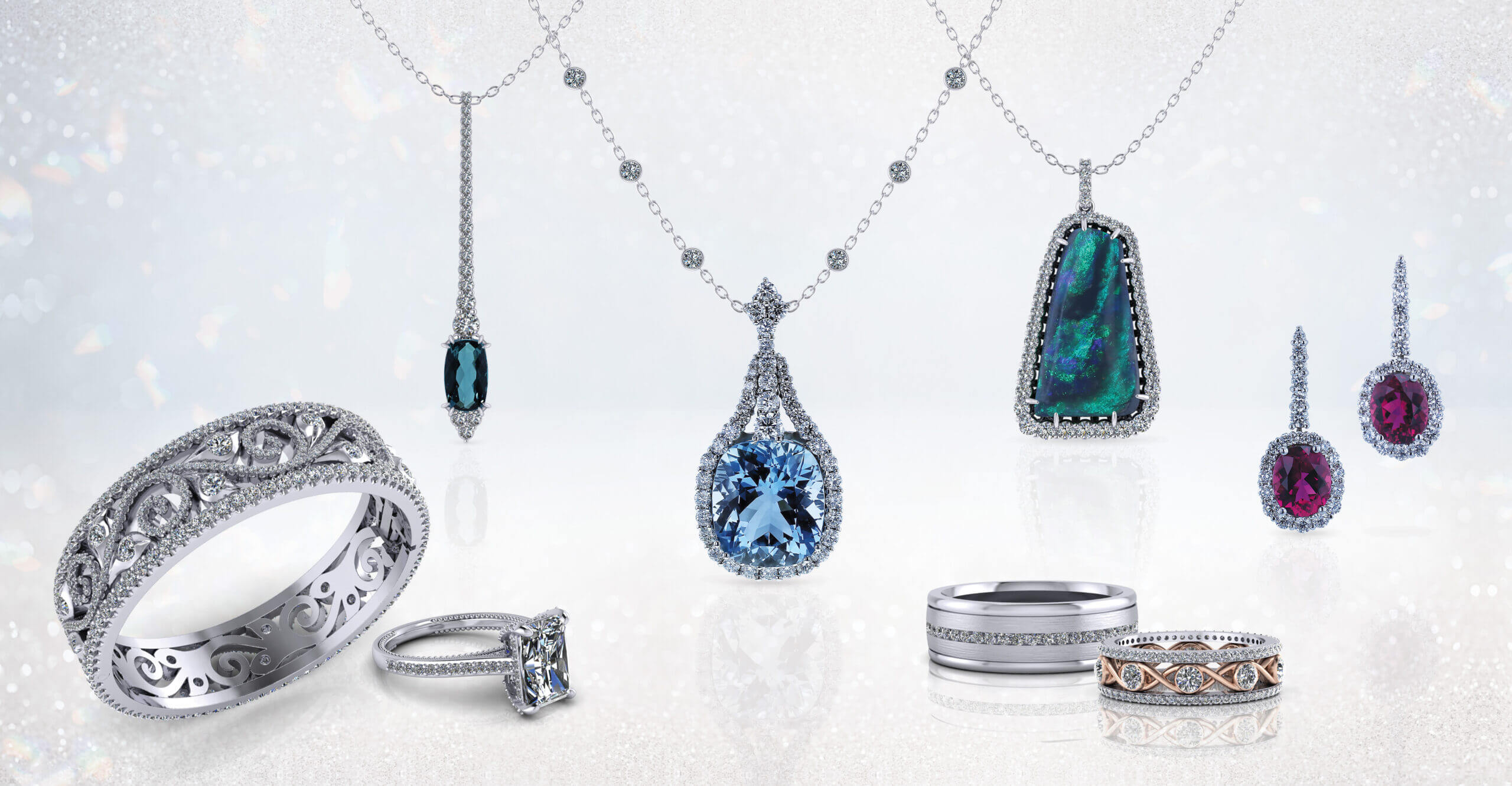Jewelry Fabrication
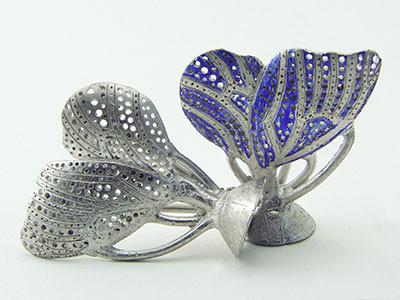
Jewelry fabrication is a rather broad topic that includes everything from basic assembly to creating handmade jewelry. Jewelry is fabricated by joining precious metal segments or parts by soldering or welding them into position. Components used in jewelry fabrication range from heads, cages, or prongs needed for setting gemstones, to clasps, clutches, and earring posts that provide functionality.
Jewelry Fabrication is performed by bench jewelers to assemble separate elements to integrate them into a finished jewelry item. The process often requires a jeweler to intertwine multiple colors precious metal components by soldering or welding or soldering.

In every situation, jewelry fabrication requires parts, preparation, and bonding. Sometimes the parts to be fabricated are created through jewelry casting. Although the cast items originate from a precision CAD jewelry design, the raw castings are crude until shaped and finished by a skilled artisan. An important element of jewelry fabrication is the cleaning and deburring of cast items. Proper preparation insures cast components will interlock with the model when assembled.
In other scenarios, parts are fabricated from raw metal, which is rolled or drawn into sheet and wire. Wire and plate can be soldered or welded together to create settings or details to be added as design. Using files, gravers, and rotary grinding tools, jewelers can shape raw metal to form the design elements needed as applique’ to models.
Jewelry Soldering

Once prepared each segment must be connected to form a beautiful and durable piece. Using a torch and a steady hand, jewelers and model makers solder miniature pieces of gold and platinum together with amazing accuracy. The skills needed to freehand support a miniature wire with tweezers, while heating it to the molten point without melting or damaging the areas to which it will be bonded are rare. Steady hands and patience are some of the many skills these artisans possess.
Using gold alloyed from metals that melt at different temperatures, several temperatures of solder are used to create fine jewelry. The first components assembled, are connected by welding or by using hard solders which melt at extremely high temperatures. As additional layers of metals are added, lower temperature solders are used, preventing the prior pieces from coming undone. When the connections are prepared properly, the jeweler who controls heat with authority can solder a seam that is undetectable. If you do not believe this, you need only look at the jewelry you are wearing. Almost every piece of fine gold jewelry you own has been soldered.
Welding Jewelry
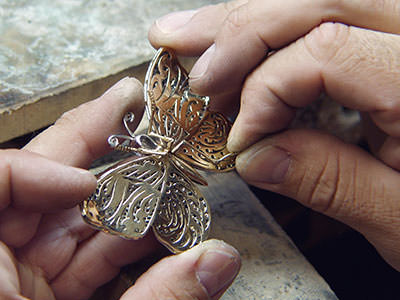
Jewelry welding does not involve the use of solders. Metal of equal property is fused to itself with extreme temperature applied to an acute area. Until the development of lasers, welding was done primarily by torch. Today, more advanced jewelers use lasers to fabricate new product and perform laser jewelry repair. In the end, most complicated jewels will be both soldered and welded.
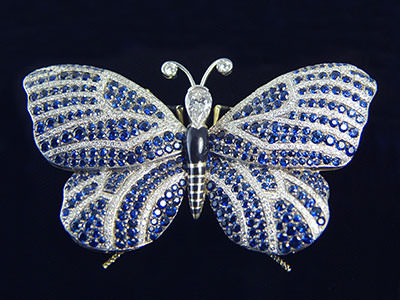
Once the pieces are assembled and soldered, the artisan will clean up any telltale signs of the work done, using hand held tools and bathing the item in acid to remove any fire scale on the metal. With the fabrication completed, the item moves to stone setting and a jewelry polishing station to become the glistening treasure that will be worn and enjoyed by the person who buys or receives it as a gift.



